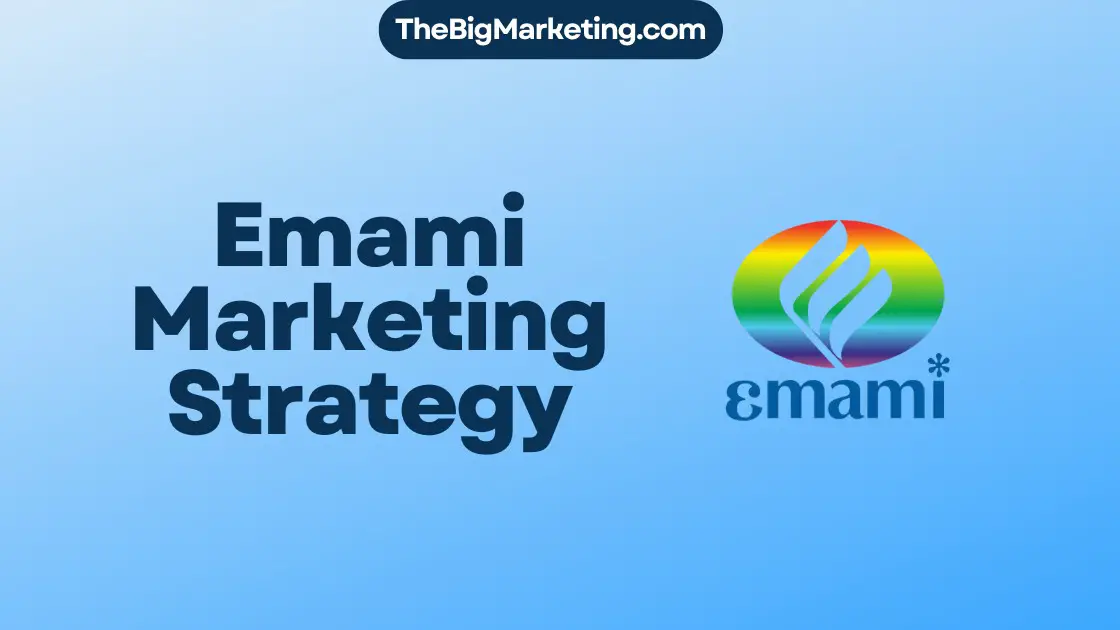Marketing myopia refers to a narrow-minded approach to marketing where businesses focus excessively on their products or services instead of understanding and catering to customer needs. This can lead to missed opportunities and hinder long-term business growth. Examples of companies that have fallen victim to marketing myopia include Kodak and Blockbuster. To avoid marketing myopia, businesses should prioritize customer needs, foster innovation, invest in competitive intelligence, and optimize their marketing strategy.
Key Takeaways:
- Marketing myopia occurs when businesses prioritize their products or services over understanding and catering to customer needs.
- Companies like Kodak and Blockbuster are examples of businesses that suffered from marketing myopia.
- To avoid marketing myopia, businesses should focus on customer needs, foster innovation, and invest in competitive intelligence.
- A customer-centric approach and an optimized marketing strategy are key to long-term success.
- Understanding market trends and adapting strategies to changing customer demands is crucial for staying ahead and avoiding marketing myopia.
Understanding Marketing Myopia and its Impact on Business Strategy
Marketing myopia is a phenomenon that occurs when businesses become too internally focused, failing to recognize broader market trends and opportunities. This myopic perspective can have a significant impact on business strategy and hinder long-term success.
When companies succumb to marketing myopia, they make decisions that prioritize their own products or services over the needs and desires of their customers. This narrow-minded approach can hinder innovation, growth, and the ability to adapt to changes in the marketplace.
By understanding marketing myopia, businesses can develop effective strategies that prioritize customer needs and drive sustainable growth. It’s essential to shift the focus from internal operations to a customer-centric approach that takes into account the broader market landscape.
Recognizing the impact of marketing myopia on business strategy is crucial for long-term success. By embracing a customer-centric mindset, companies can align their strategies with market trends, identify growth opportunities, and deliver value that meets the evolving needs of their target audience.
Businesses must also remain agile and adaptable to stay ahead in a dynamic marketplace. They need to constantly monitor market trends, analyze customer preferences, and adjust their strategies accordingly. This flexibility allows businesses to avoid marketing myopia and continuously optimize their approach to drive success.
With a solid understanding of marketing myopia and its impact on business strategy, companies can foster innovation, adapt to changing market dynamics, and maintain a competitive edge.
Examples of Marketing Myopia in Real-World Businesses
In real-world business scenarios, marketing myopia can have significant negative consequences on companies that fail to adapt to changing customer demands and market trends. Two prominent examples of this phenomenon are Kodak and Blockbuster.
Kodak’s Marketing Myopia
Kodak, once a dominant player in the photography industry, succumbed to marketing myopia by focusing solely on producing film for traditional cameras. The company failed to recognize the growing popularity of digital photography and neglected to invest in developing digital camera technology. Instead, Kodak clung to its film-based business model, overlooking the potential of the digital revolution.
As a result, when digital cameras gained widespread acceptance, Kodak struggled to remain relevant. The company faced a sharp decline in sales and eventually filed for bankruptcy in 2012. Kodak’s failure to adapt and innovate based on changing customer preferences is a prime example of marketing myopia.
Blockbuster’s Marketing Myopia
Blockbuster, a once-dominant video rental chain, also fell victim to marketing myopia. The company focused heavily on brick-and-mortar stores and the late fee revenue model, overlooking the emerging trend of online streaming services. While Blockbuster had opportunities to acquire Netflix, it failed to recognize the potential of this disruptive technology.
As a result, when online streaming became popular, Blockbuster faced a steep decline in revenue and customer base. The company filed for bankruptcy in 2010, while Netflix thrived and revolutionized the way people consume media. Blockbuster’s failure to adapt to the changing landscape and embrace new technologies exemplifies the dangers of marketing myopia.
These real-world examples highlight the risks that businesses face when they become too internally focused and fail to recognize broader market trends and innovations. To avoid falling victim to marketing myopia, companies must prioritize understanding and catering to customer needs, foster a culture of innovation, and stay informed about changes in the marketplace.
Overcoming Marketing Myopia: Strategies for Success
Overcoming marketing myopia requires businesses to shift their focus and adopt strategies that prioritize understanding their target market and identifying customer needs. It is important to deliver value beyond just the features of their own products, embracing a customer-centric approach that ensures long-term success in a competitive marketplace.
Prioritizing Customer Needs
A customer-centric approach is at the core of overcoming marketing myopia. By prioritizing customer needs, businesses can better understand their target market and tailor their products or services accordingly. Conducting market research, surveys, and analyzing customer feedback can provide valuable insights that drive innovation and growth.
Fostering Innovation Within the Team
Innovation is crucial to avoid marketing myopia. Encouraging a culture of innovation within the organization allows for constant adaptation and growth. By fostering an environment where team members feel inspired to generate new ideas, experiment with different strategies, and take calculated risks, businesses can stay relevant in a dynamic marketplace.
Investing in Competitive Intelligence
Competitive intelligence plays a vital role in avoiding marketing myopia. By staying informed about competitors, businesses can identify industry trends and consumer preferences. Investing in tools and platforms that gather competitive intelligence, such as social media monitoring and competitive analysis, enables businesses to make data-driven decisions and stay ahead of the competition.
Optimizing Marketing Strategies
Continuously optimizing marketing strategies is essential to avoid marketing myopia. By reviewing data, gaining insights, and identifying areas for improvement, businesses can enhance their performance and meet changing customer needs. Using data-driven decision-making processes ensures that marketing strategies remain effective and result-driven.
To overcome marketing myopia and stay relevant in a competitive marketplace, businesses must prioritize a customer-centric approach, foster innovation within the team, invest in competitive intelligence, and optimize their marketing strategies. By implementing these strategies, businesses can overcome myopic thinking and ensure long-term success.
The Importance of Understanding Customer Needs in Marketing
Recognizing the importance of understanding customer needs is crucial for any successful marketing strategy. By shifting the focus from product-centricity to customer-centricity, businesses can gain a competitive edge, build stronger relationships with their target audience, and drive sustainable growth. Customer needs can change over time, and businesses must stay informed and adapt their strategies accordingly to meet those changing needs.
Customer-centric marketing puts the customer at the heart of the decision-making process. It involves understanding their preferences, desires, and pain points to deliver tailored solutions and experiences. By taking the time to understand customer needs, businesses can develop products and services that address specific challenges and provide unique value.
The Benefits of Understanding Customer Needs
- Increased customer satisfaction and loyalty
- Improved product and service offerings
- Higher customer engagement and interaction
- Enhanced brand reputation
- More effective targeting and messaging
- Greater competitive advantage
By focusing on customer needs, businesses can ensure that their marketing efforts resonate with their target audience. They can tailor their messaging, channels, and experiences to meet customer expectations, leading to increased customer satisfaction and loyalty. This, in turn, can result in higher customer retention rates and repeat business.
Understanding customer needs also enables businesses to continuously improve their products and services. By gathering insights from customer feedback, market research, and data analytics, businesses can identify areas for innovation and address any gaps or pain points. This proactive approach to product development helps businesses stay ahead of the competition and ensures that their offerings remain relevant and valuable.
Additionally, understanding customer needs allows businesses to communicate more effectively with their target audience. By speaking directly to their pain points and desires, businesses can create messaging that resonates with their customers and prompts them to take action. When customers feel understood and valued, they are more likely to engage with the brand and become advocates, spreading positive word-of-mouth and driving organic growth.
Ultimately, understanding customer needs is essential for long-term business success. By incorporating customer-centricity into marketing strategies, businesses can build strong customer relationships, differentiate themselves from competitors, and drive sustainable growth. Keeping a finger on the pulse of customer preferences and adapting strategies accordingly is the key to meeting evolving customer needs and staying ahead in a dynamic marketplace.
Encouraging Innovation to Prevent Marketing Myopia
One way to prevent marketing myopia and foster long-term success is by cultivating a culture of innovation within the organization. Encouraging innovation enables businesses to stay ahead of the competition, anticipate market shifts, and deliver unique solutions that meet evolving customer needs.
A culture of innovation starts with creating an environment where teams feel inspired to generate new ideas and think outside the box. This can be achieved by promoting open communication, embracing diverse perspectives, and rewarding creativity and risk-taking. By providing employees with the autonomy and resources to experiment with different strategies, businesses can uncover innovative approaches that set them apart.
Hiring diverse talent also plays a crucial role in encouraging innovation. When individuals from different backgrounds and experiences come together, they bring a variety of perspectives and insights that can fuel creativity and drive innovation. Embracing diversity in all its forms can lead to fresh ideas and breakthrough solutions.
Furthermore, staying open-minded and flexible is essential to foster a culture of innovation. Embracing change and being willing to adapt to new technologies, market trends, and customer preferences allow businesses to remain relevant and competitive. It is important to continuously seek feedback from customers, monitor industry developments, and invest in ongoing learning and development for employees.
Fostering a Culture of Innovation: Key Strategies
To foster a culture of innovation and prevent marketing myopia, consider implementing the following strategies:
- Promote open communication and collaboration across teams.
- Encourage and reward creativity, risk-taking, and out-of-the-box thinking.
- Hire diverse talent that brings fresh perspectives and insights.
- Stay agile and adaptable to embrace changes in technology and market dynamics.
- Invest in ongoing learning and development opportunities for employees.
- Provide the necessary resources and support for experimentation and idea generation.
By implementing these strategies, businesses can create a dynamic and innovative culture that fosters continuous growth, drives customer-centricity, and prevents marketing myopia.
Benefits of Fostering a Culture of Innovation
| Benefits | Description |
|---|---|
| Increased competitiveness | Fostering innovation allows businesses to stay ahead of the competition and meet changing customer demands. |
| Enhanced problem-solving | An innovative culture encourages employees to think creatively and develop novel solutions to complex business challenges. |
| Improved employee engagement | When employees feel empowered to contribute their ideas and see them implemented, it boosts their morale and engagement with the organization. |
| Greater customer satisfaction | Innovation leads to the development of products and services that better align with customer needs and preferences, resulting in higher customer satisfaction. |
| Inspires continuous improvement | A culture of innovation cultivates a mindset that embraces learning, growth, and ongoing improvement. |
Investing in Competitive Intelligence for Business Success
One of the key strategies to stay ahead of competitors and avoid marketing myopia is by investing in competitive intelligence. By monitoring and gathering data on your competitors, you can gain valuable insights into market trends, strategies, and customer preferences. This information enables you to make informed decisions, refine your marketing efforts, and stay ahead in a dynamic marketplace.
There are several tools and techniques available to leverage competitive intelligence effectively. Social media monitoring allows you to track your competitors’ activities, engage with customers, and identify emerging trends. Google alerts can keep you updated on industry news, competitor mentions, and market developments. Additionally, competitive analysis platforms provide comprehensive reports and analytics, helping you benchmark your performance against rivals and identify areas for improvement.
Benefits of Investing in Competitive Intelligence
1. Identifying Opportunities: Competitive intelligence empowers you to identify untapped markets, emerging customer needs, and potential gaps in the market. By recognizing these opportunities, you can develop innovative strategies to meet customer demands and gain a competitive advantage.
2. Understanding Competitor Strategies: By analyzing your competitors’ strategies, you can identify their strengths and weaknesses, anticipate their moves, and adjust your own strategies accordingly. This insight allows you to position your brand effectively and differentiate yourself in the market.
3. Anticipating Market Trends: Competitive intelligence helps you stay informed about industry trends, consumer behaviors, and technological advancements. This foresight allows you to proactively adapt your products, services, and marketing strategies to align with evolving customer needs and preferences.
4. Improved Decision Making: By basing your decisions on data and insights gathered through competitive intelligence, you can make informed choices that drive business growth and mitigate risks. It helps you prioritize your resources, optimize your marketing investments, and make strategic decisions that align with your business goals.
Investing in competitive intelligence is an ongoing process that requires dedication and commitment. By leveraging the power of competitive intelligence, you can gain a deeper understanding of your industry, outmaneuver your competitors, and stay ahead in a rapidly changing market.
Optimizing Marketing Strategies for Long-Term Success
To ensure long-term success and avoid marketing myopia, it is crucial for businesses to continually optimize and improve their marketing strategies. Even if a strategy is currently performing well, it’s important not to become complacent. By regularly reviewing data, gaining insights, and finding ways to enhance performance, businesses can stay ahead in a competitive market and maintain their competitive edge.
One of the key steps in optimizing marketing strategies is analyzing the results. By carefully examining the data, businesses can identify what is working and what can be improved. This analysis helps in understanding the strengths and weaknesses of the strategies being implemented.
Once the strengths and weaknesses are identified, data-driven decision making becomes essential. By making decisions based on data and insights rather than guesswork or assumptions, businesses can make informed choices that are more likely to yield positive results. This approach ensures that marketing strategies remain effective and aligned with customer needs.
Benefits of Data-Driven Marketing
Data-driven marketing allows businesses to make strategic decisions based on factual information rather than subjective opinions. By leveraging data, businesses can gain a better understanding of their target audience, their preferences, and their behavior. This, in turn, enables businesses to tailor their marketing efforts to effectively reach and engage with their customers.
Data-driven marketing also empowers businesses to measure and track the performance of their marketing strategies. By utilizing analytics tools, businesses can monitor key performance indicators (KPIs), track conversions, and evaluate the success of their campaigns. This iterative process allows for continuous improvement and optimization, ensuring marketing efforts are consistently delivering desired results.
With data-driven marketing, businesses can also identify new opportunities and trends within their target market. By analyzing market data, consumer behavior patterns, and competitor insights, businesses can uncover untapped customer needs and adapt their strategies accordingly. This proactive approach keeps businesses ahead of the competition and better positioned to capitalize on emerging trends.
Overall, optimizing marketing strategies through data-driven decision making is a crucial step in achieving long-term success. By continually analyzing results, making data-driven decisions, and leveraging customer insights, businesses can ensure their marketing efforts remain effective, adaptive, and aligned with customer needs.
Case Studies of Marketing Myopia: Blockbuster and Kodak
Blockbuster and Kodak serve as insightful case studies that exemplify the negative consequences of marketing myopia. These companies, once industry leaders, failed to adapt to changing customer preferences and market dynamics, which ultimately led to their downfall.
Blockbuster, with its focus on physical stores and late fees, missed the opportunity to embrace the emerging trend of online streaming services. The company’s reluctance to evolve and capitalize on the growing popularity of digital media ultimately resulted in its demise.
Kodak, a renowned name in the photography industry, struggled to compete as digital photography gained traction. The company’s heavy reliance on film and its failure to recognize the potential of digital imaging hindered its ability to stay competitive in a rapidly evolving market.
These case studies highlight the importance of adapting strategies to meet evolving customer needs and market trends. By failing to recognize and respond to changing consumer preferences, both Blockbuster and Kodak lost their relevance and market share.
It is crucial for businesses to continuously assess market dynamics, identify emerging trends, and find ways to innovate in order to avoid falling victim to marketing myopia. By prioritizing customer-centricity, staying agile, and embracing innovation, companies can navigate the dynamic marketplace and position themselves for long-term success.
In the next section, we will explore the strategies that businesses can employ to overcome marketing myopia and stay ahead in a competitive landscape.
Comparison of Blockbuster and Kodak
| Blockbuster | Kodak | |
|---|---|---|
| Focus | Physical stores and late fees | Film-based photography |
| Lack of Adaptation | Failed to embrace online streaming services | Missed the rise of digital photography |
| Consequences | Decline in market share and eventual bankruptcy | Inability to compete with digital photography and loss of market dominance |
Staying Ahead in a Dynamic Marketplace
In today’s fast-paced business environment, staying ahead in a dynamic marketplace is crucial for long-term success. To achieve this, businesses must adopt strategies that prioritize understanding customer needs, avoid marketing myopia, and embrace a customer-centric approach.
Understanding Customer Needs
Understanding customer needs is the foundation of any successful business. By thoroughly researching and analyzing market trends, businesses can gain valuable insights into their target audience’s preferences, pain points, and evolving demands. This knowledge allows businesses to develop products and services that meet customer needs effectively and differentiate themselves from competitors.
Embracing Innovation
Innovation is the key to staying ahead in a dynamic marketplace. By fostering a culture of innovation within the organization, businesses can continuously adapt and evolve to meet changing customer expectations and market trends. This can involve investing in research and development, encouraging creativity among employees, and being open to new ideas and technologies.
Investing in Competitive Intelligence
Investing in competitive intelligence provides businesses with valuable insights into their competitors’ strategies, strengths, and weaknesses. By gathering data on market trends, customer preferences, and competitor activities, businesses can make informed decisions and identify new opportunities. This helps them to proactively respond to market changes and maintain a competitive edge.
Optimizing Marketing Strategies
Constantly optimizing marketing strategies is essential for staying ahead in a dynamic marketplace. By regularly reviewing and analyzing marketing performance data, businesses can identify areas for improvement, make data-driven decisions, and adapt their strategies to meet evolving customer needs. This includes leveraging digital marketing channels, personalizing customer experiences, and staying informed about emerging marketing trends.
By prioritizing understanding customer needs, embracing innovation, investing in competitive intelligence, and optimizing marketing strategies, businesses can ensure they stay ahead in a dynamic marketplace and avoid falling victim to marketing myopia. Adopting a customer-centric approach allows businesses to build long-lasting relationships with their customers, effectively differentiate themselves from competitors, and drive sustainable growth.
Conclusion
Marketing myopia can have a detrimental impact on business success by leading to missed opportunities and hindered growth. However, by understanding the concept of marketing myopia and implementing effective strategies to avoid it, businesses can stay ahead in a dynamic marketplace and achieve long-term success.
A key factor in avoiding marketing myopia is prioritizing a customer-centric approach. By recognizing the importance of customer needs and delivering value beyond just the features of their own products or services, businesses can build stronger relationships with their target audience and gain a competitive edge.
Fostering innovation, investing in competitive intelligence, and optimizing marketing strategies are also essential for avoiding marketing myopia. Businesses should encourage a culture of innovation within their organization, staying open-minded and flexible to adapt to changing market trends. Furthermore, investing in competitive intelligence allows businesses to gather valuable insights about their competitors and use that information to stay ahead in the market.
In conclusion, by understanding and actively addressing marketing myopia, businesses can drive sustainable growth and achieve long-term success by staying customer-centric, fostering innovation, investing in competitive intelligence, and optimizing marketing strategies.






